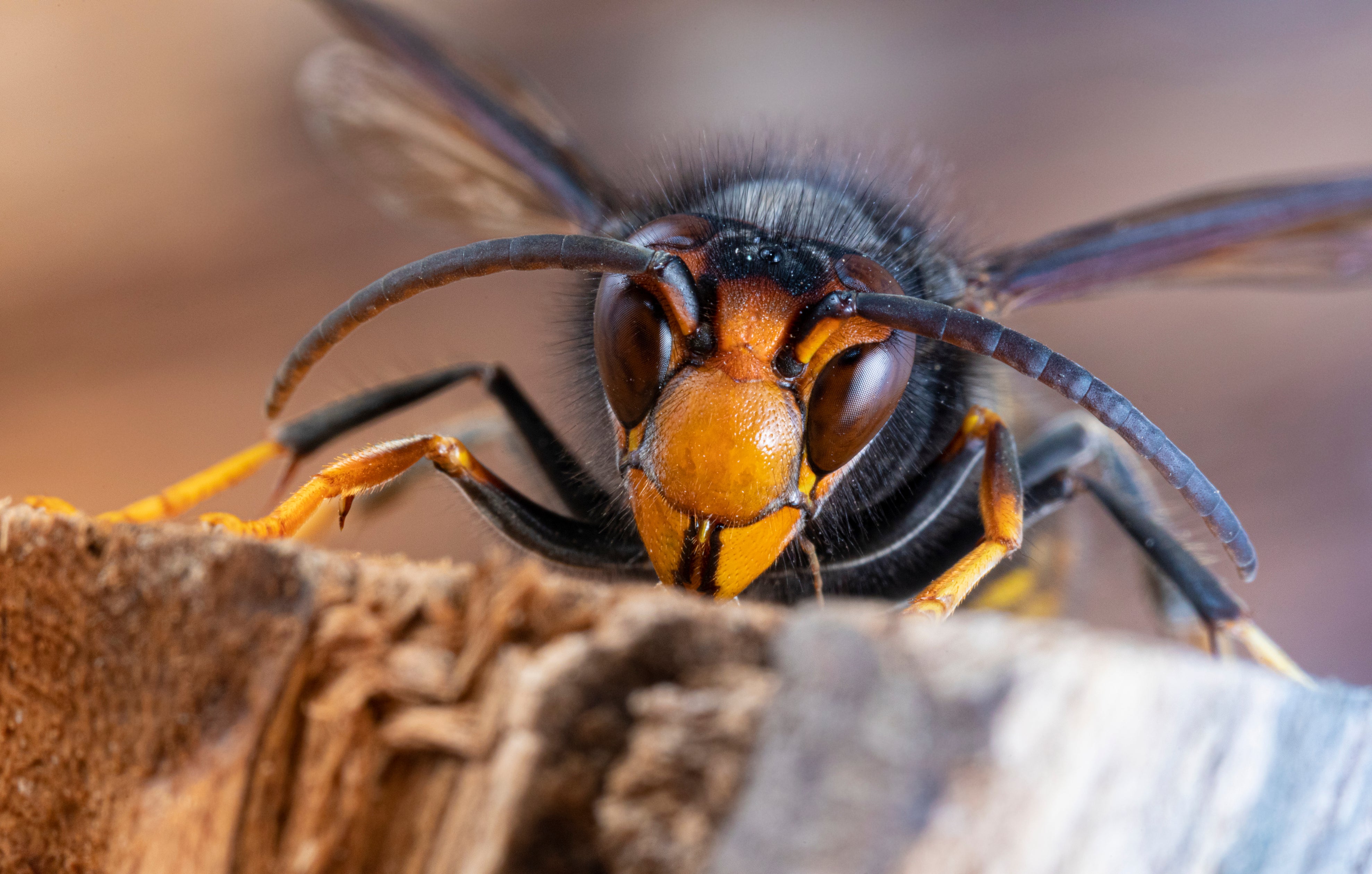This year could be the worst ever for Asian hornets in the UK, scientists are warning, after a rise in sightings of the invasive insect.
The National Bee Unit says there were 73 credible sightings up to the end of last month – more than double the 28 recorded in the same period last year.
Experts from the unit have also found 28 nests so far this year. One nest can house up to 3,000 of the insects.
Asian hornets, also known as yellow-legged hornets, can badly harm native pollinator insects, including honeybees, threatening food security and ecosystems, ecologists say.
The species was sighted in record numbers in the UK in 2023, and last September UK experts saw evidence for the first time of the queens over-wintering. In May this year, their numbers were described as unprecedented.
The Liberal Democrats have accused the government of not taking the issue seriously enough and are calling for a task force to deal with the problem.
Martin Wrigley, MP for Newton Abbot in Devon, told The Telegraph: “The previous Conservative government was asleep at the wheel in their response to Asian hornets so the government has got to wake up to the risks and get a grip on this invasive species now – especially ahead of August and September, when new females are born.

“We urgently need a fully fleshed task force dedicated to this invasive insect to reduce delays between reporting nests and their destruction. It’s time this government took our biodiversity and the safety of our communities seriously.”
The species, which spread from Asia to Europe in a pottery consignment sent to France in 2004, was first spotted in Britain in 2016, and numbers have been rising since.
The UK Centre for Ecology & Hydrology (UKCEH) has warned that without early detection and a rapid response, the species could gain a foothold in the UK.
Sightings usually peak from September, and people are urged to report any sightings on the Asian Hornet Watch app.
Ian Campbell, of the British Beekeepers Association, said that this year appeared to be a “surge year” for yellow-legged hornets, in part because of the weather.
“There is significant worry that this year is going to be ahead of 2023, which is the worst year we’ve had so far,” he said.

He called for authorities to try to eradicate the species before it became fully established.
The invasive species is mostly found in Kent and East Sussex but has also been seen in Surrey, Hampshire and London, and even as far as Co Durham. It’s thought they come into the country on vehicles.
Ecologists say that except for parts of Scotland, all of Britain has a suitable climate for yellow-legged hornets.
Asian hornets also have a dark abdomen with a band of yellow, while native hornets’ abdomens are predominantly yellow.
A spokesman for the Animal and Plant Health Agency told The Telegraph: “Our highly skilled staff work 24/7 to tackle the threat of invasive non-native species, which cost the economy nearly £2bn a year.
“The yellow-legged hornet response, as with other outbreaks, is managed through a roster of trained nest destructors and inspectors that is scaled up as required based on reports and seasonal fluctuations.”
They said it was not unexpected to see more reports of sightings as public awareness of the insects increased.
A spokesman for Defra said the government would “never waver in its duty to protect the UK’s biosecurity” and pointed to its establishment of a new £200m biosecurity centre and an additional £10m for new surveillance projects.


